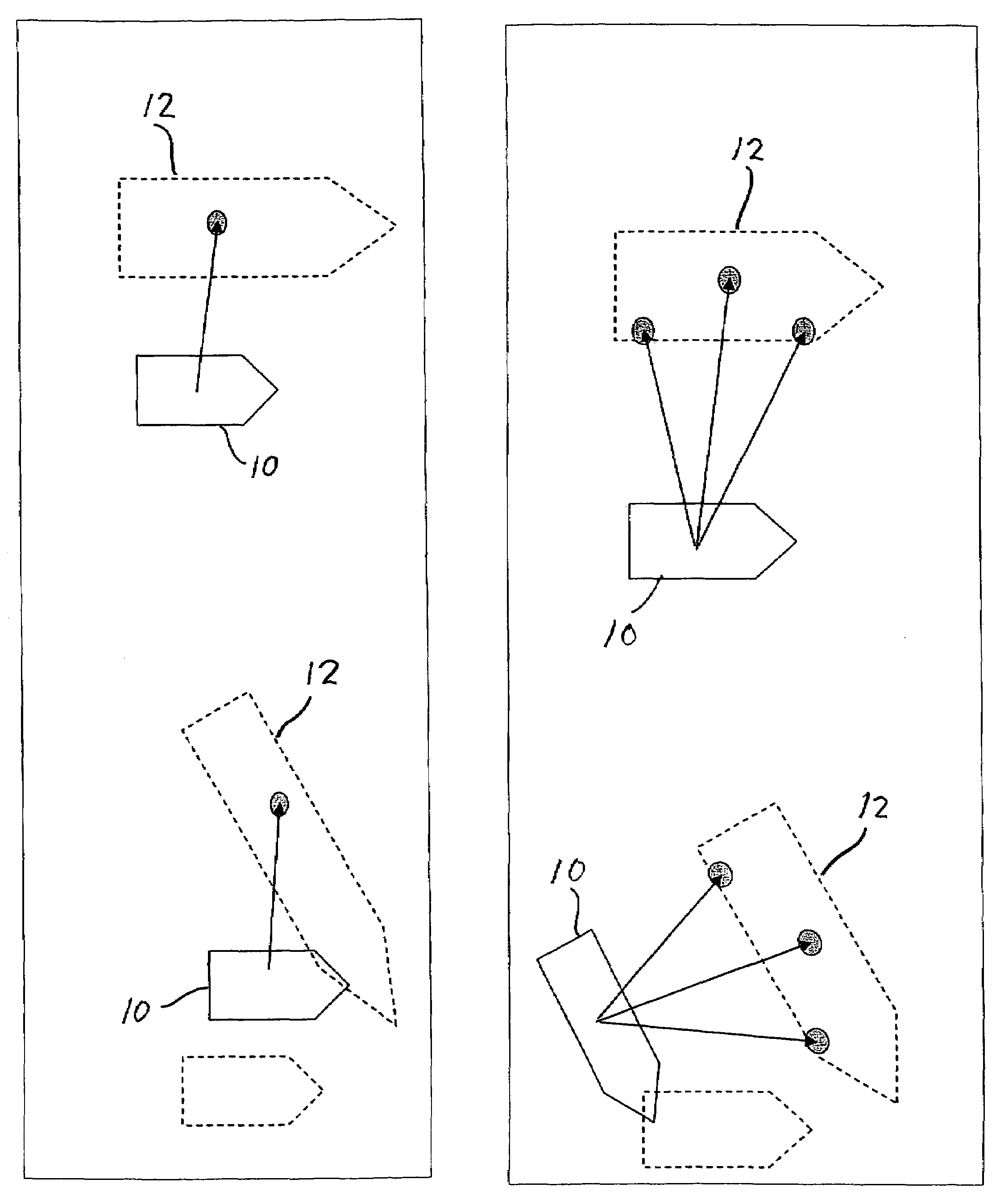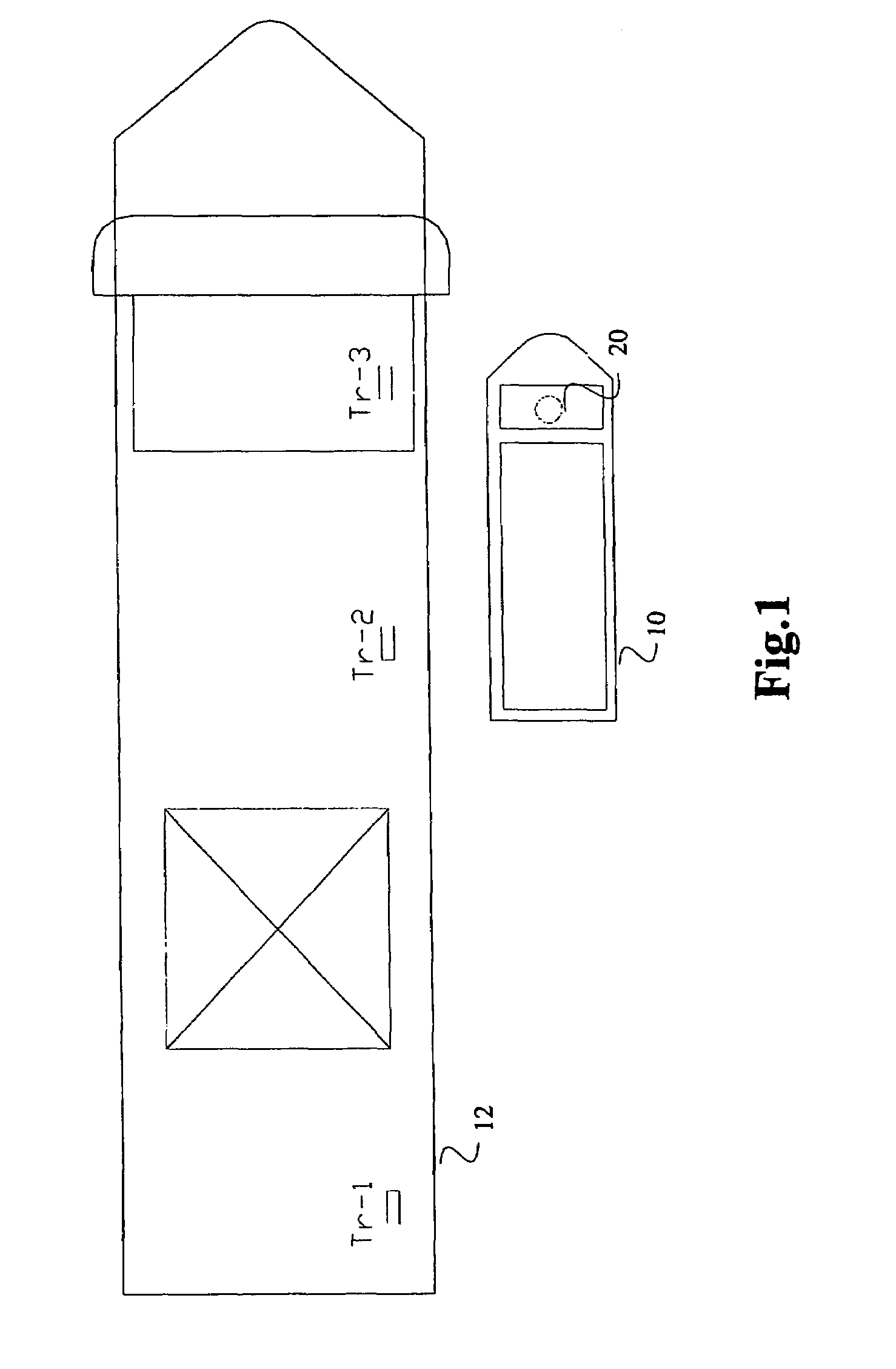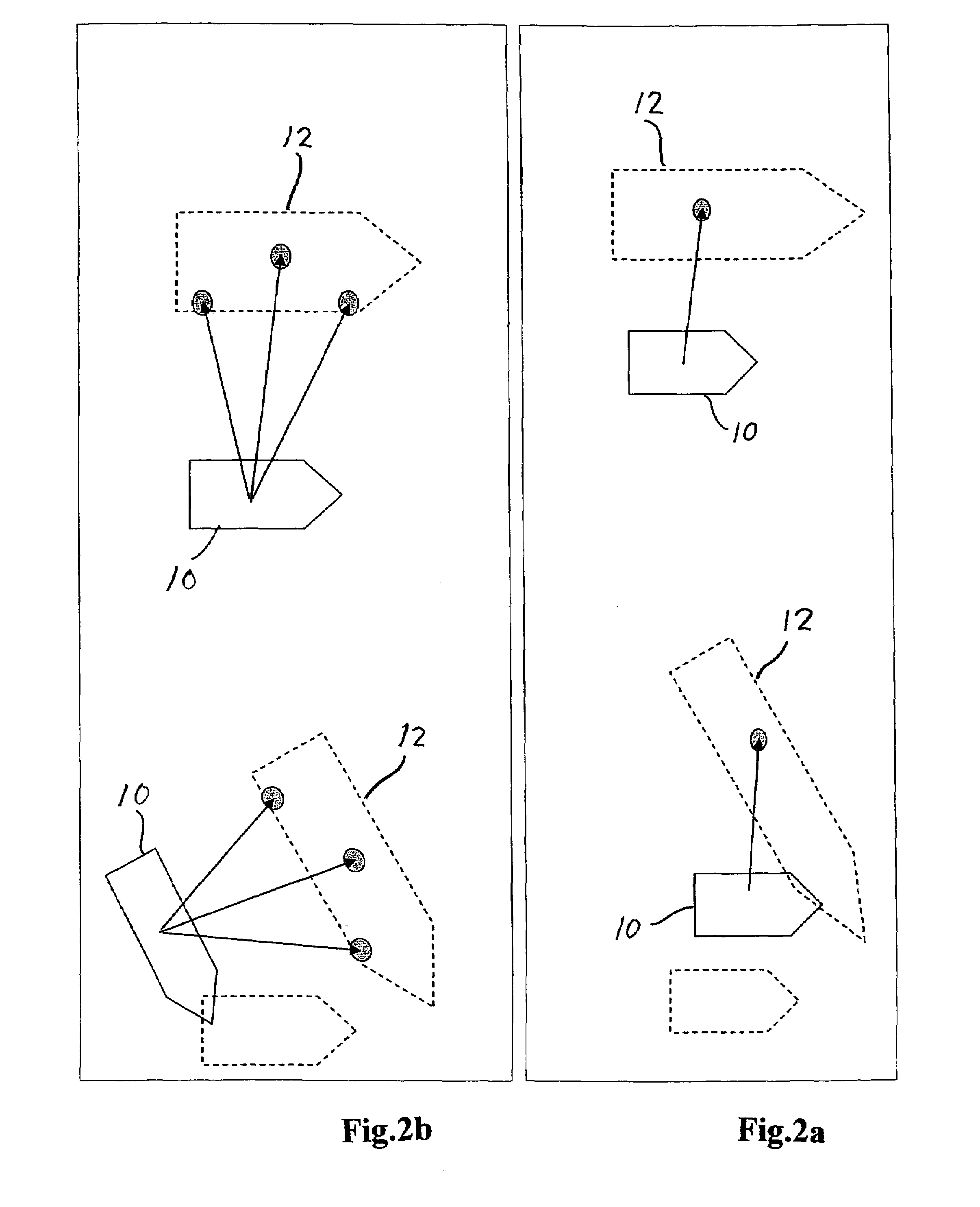Method and system for determining the position of marine vessels and similar objects
- Summary
- Abstract
- Description
- Claims
- Application Information
AI Technical Summary
Benefits of technology
Problems solved by technology
Method used
Image
Examples
Embodiment Construction
[0034]In FIG. 1 the present invention is used for positioning a supply vessel 10 next to an oil drilling platform 12. The supply vessel is provided with an interrogator 20, which will be described in more detail later. The platform 12 is a floating production vessel, which has three transponders TR-1, TR-2 and TR-3 arranged along the docking side for the supply vessels 10.
[0035]In FIG. 2a the docking of a supply vessel 10 with a system with one transponder Tr is shown. The Figure illustrates a collision with the production vessel 12, which potentially may occur. FIG. 2b illustrates the capability of correct tracking of the remote production vessels movement, and moves automatically with it, when multiple transponders Tr1 and Tr2 are utilised for positioning.
[0036]FIG. 3 illustrates a particular use of the system according to the invention, comprising an interrogator 20 arranged on a seismic vessel 10, and transponders Tr arranged on floats 13 and dragged behind the vessel 10. In thi...
PUM
 Login to View More
Login to View More Abstract
Description
Claims
Application Information
 Login to View More
Login to View More - Generate Ideas
- Intellectual Property
- Life Sciences
- Materials
- Tech Scout
- Unparalleled Data Quality
- Higher Quality Content
- 60% Fewer Hallucinations
Browse by: Latest US Patents, China's latest patents, Technical Efficacy Thesaurus, Application Domain, Technology Topic, Popular Technical Reports.
© 2025 PatSnap. All rights reserved.Legal|Privacy policy|Modern Slavery Act Transparency Statement|Sitemap|About US| Contact US: help@patsnap.com



